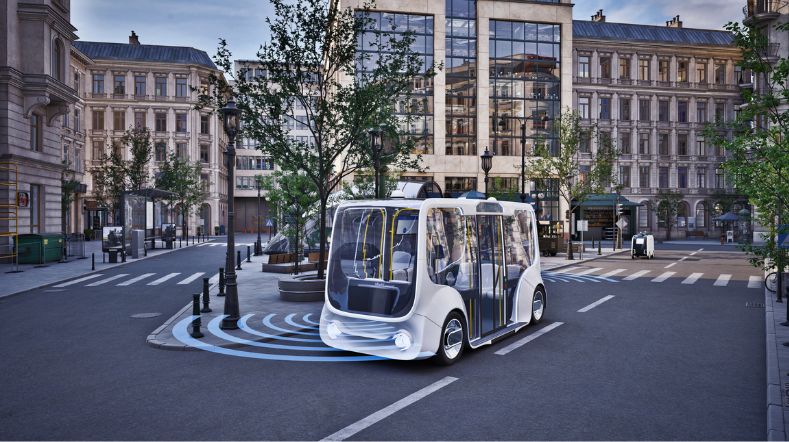
Breaking the status quo in the energy transition with LABS & LABS4U
Status project
Launch in 2026
In cooperation with
Academic groups, software developers, municipalities, grid operators, fleet owners and more
Cities and regions are at a pivotal point in the transition to sustainable mobility and energy, with grid congestion emerging as a major obstacle. Achieving climate goals requires smart, timely investments in infrastructure and fleets. TNO’s LABS platform is the foundation for next-generation planning models, providing fast, accurate simulations for cost-effective, system-level decision-making. Starting with a primary application in electric mobility, LABS will evolve to address a wide range of vital societal challenges.
Complex transitions require advanced decision-making
The mobility and energy transition demand major investments in infrastructure, vehicles, and management systems. A key bottleneck is grid congestion, which threatens not only climate goals but also productivity, accessibility, and liveability. To address this, governments, grid operators, charging providers, and fleet owners need fast, accurate decision-support tools that capture real-world behaviour.
Shifting charging and energy use away from peak hours could ease grid pressure significantly. Yet current macroscopic models lack detail on populations, vehicles, buildings, and activities, and rely on static averages – leading to suboptimal investments and missed opportunities.
The solution: Large-scale Agent-Based Simulation
To empower stakeholders to make model-based, cost-effective investment decisions at the system level, TNO is developing a Large-scale Agent-Based Simulation platform (LABS). This high-performance, next-generation simulation environment is both accurate and fast.
Agent-Based Models (ABMs) simulate the actions and interactions of individual agents - such as vehicles, people, charging stations, or traffic signals - within a system. Each agent follows its own rules and adapts to changing circumstances, allowing the model to capture the complexity of real-world behaviour. This enables more accurate analysis of charging systems, better alignment with human behaviour, and ultimately smarter, more efficient investment decisions.
By mapping individual real-time actions, ABMs provide insights that help steer real-world behaviour.
Peter van Buijtene, senior manager innovation partnerships: 'Net congestion is already constraining housing and area development. The only way to unlock immediate impact is by influencing behaviour: shifting charging patterns, rethinking mobility choices, and enabling flexible energy use. LABS empowers decision-makers and market parties with high-resolution simulations to test these behavioural interventions at scale – making the invisible visible, and the complex actionable.'

'LABS empowers decision-makers and market parties with high-resolution simulations to test these behavioural interventions at scale – making the invisible visible, and the complex actionable.'
Best of both worlds
Traditional models are fast but static, relying on averages that miss local effects and reduce reliability for investment planning. Current ABMs add detail and realism but are typically too slow and fragmented for large-scale application, with most initiatives still at low TRL levels and struggling to scale.
LABS bridges the gap by combining speed and detail. Using advanced computing and automated rule extraction from real-world data, it delivers accurate, scalable simulations of entire cities and regions to support smarter infrastructure, policy, and investment decisions. LABS enables stakeholders to create, simulate, and evaluate a wide range of policy scenarios in real time, exploring the impacts of different strategies.
Although LABS initially targets mobility and energy transitions, where congestion is a key barrier, its flexible architecture also applies to domains such as healthcare and defence.
Unique right to play
Building on our proven ability to drastically reduce computation times in macroscopic models – demonstrated through the successful spinout of Urban Strategy (Scenexus) – we combine high-performance computing expertise with hardware acceleration, and our deep modelling knowledge to deliver the next generation of ABM tools.
LABS will be partly open source, managed with academic partners, and offered as a Platform-as-a-Service (PaaS). This enables consultants and decision makers to run scalable simulations, calibrate models, and generate scenarios without managing infrastructure.
Starting with e-mobility, LABS will expand across domains, with shared input data (population, buildings, infrastructure) driving sustainable growth to more cities and regions worldwide. Its modular, open architecture, cross-domain potential, and societal relevance make LABS attractive for investment, adoption, and long-term value creation.
Driving societal impact
LABS enables smarter, cost-effective infrastructure planning and peak-shaving strategies that cut grid congestion and related costs. By removing barriers to efficient charging, it accelerates mobility electrification – leading to reduced nitrogen and greenhouse gas emissions, improved air quality and public health, and lower healthcare costs. LABS promotes efficient use of urban space and fair access to mobility and electricity by optimising charging and parking infrastructure, supporting sustainable urban development.
Stakeholders are investing billions annually in fleet electrification, charging, and grid expansion. LABS identifies the most cost-effective strategies: peak shaving alone could save €350 million to €2.2 billion in grid investments, while reduced congestion adds €400 million per year in economic benefits for the Dutch economy. While demand for electricity in the Netherlands will approximately double from 2025 to 2040, these savings and economic benefits will only grow.
Launching the LABS4U ecosystem
To bring LABS to market, LABS4U will unite academic groups, software developers, and industry partners into a cooperative ecosystem that accelerates innovation for cost-effective decision making. Its goal is to align currently fragmented ABM initiatives and scale them to bridge the gap towards international market deployment. By combining smaller initiatives with our agent core, LABS4U creates a dynamic ecosystem where academia, developers, and decision makers jointly advance ABM-based decision support worldwide.
Join the LABS4U community
LABS is still in its early development phase. We are actively looking for academic groups, software developers, and other partners to co-create the LABS platform by building on both existing and new initiatives.
At the same time, we are setting up the LABS4U community – a dynamic ecosystem where municipalities, grid operators, fleet owners, consultants, and researchers will collaborate to shape the future of sustainable mobility, energy, and beyond. Together, we’ll explore the first implementations and applications of LABS in 2026.
Interested in co-developing or collaborating? Get in touch to explore opportunities and become part of the LABS4U community.
Get inspired
Smarter and faster construction: TNO helps Eindhoven Metropolitan Region with historic leap of scale


Don't jump on every innovation bandwagon: TNO's framework to help cities make smarter mobility choices


Urban space


Zero emission urban mobility


How governments can make MaaS work to societal goals



